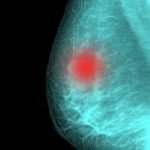STEFANIE BENNINGFIELD
KATIE DINELLO
PAULA MADER
POORNA MENON
KRIS SOMOL, ND
Polycystic Ovarian Syndrome (PCOS) is a common hormonal disorder among individuals with ovaries.1 Its effects are extensive, causing androgen excess, menstrual irregularities, infertility, and cardiometabolic dysfunctions that present as dysmenorrhea, obesity, hirsutism, and anovulation, among other symptoms.2 Infertility is a significant consequence of PCOS, for which conventional medicine lacks a consistent approach.3 While estrogen modulators and metformin are first-line therapies for PCOS patients with infertility, these drugs carry risks and are coupled with overall patient dissatisfaction.4,5 Additionally, metformin has not demonstrated actual improvement in fertility.6
This article evaluates the efficacy of metformin plus myoinositol (as compared with metformin alone) for PCOS-related infertility, as examined in a 2019 study by Agrawal and colleagues.6 As outlined below, their findings demonstrated the potential role of naturopathic medicine in treating the complex consequences of PCOS, particularly infertility.6
Introduction
PCOS is the most common endocrine disorder among reproductive-aged women in the United States.1 Its prevalence varies according to diagnostic criteria; it has been estimated at 16.6% based on the Rotterdam Criteria, and as low as 6.3-8.5% based on antral follicle count.7 The variation in prevalence illustrates the condition’s complexity, particularly in regard to diagnosis. PCOS’s pathogenesis is still debated; however, research suggests a strong genetic component and an interaction between genetic and environmental factors.8 The main characteristics of PCOS are hyperandrogenism, ovulatory dysfunction, and polycystic ovaries. Obesity, insulin resistance, metabolic syndrome, infertility, and diabetes are common associations with PCOS, but not required for diagnosis.9 PCOS is the most predominant cause of anovulatory infertility, wherein 90-95% of individuals attending infertility clinics with anovulation have PCOS.10 The Rotterdam Criteria are most often used for diagnosis, and require 2 of the following for diagnosis: oligo- and/or anovulation, clinical and/or biochemical signs of hyperandrogenism, and polycystic ovaries as seen on ultrasound. Understanding PCOS is important because the condition increases the risk of comorbidities such as infertility, endometrial cancer, obesity, depression, obstructive sleep apnea, nonalcoholic fatty liver disease, type 2 diabetes mellitus, and cardiovascular disease. Treatment goals vary based on individual clinical presentations, the desire to become pregnant, management of underlying metabolic dysfunctions, and the prevention of endometrial carcinoma.4
International guidelines for assessment and management of PCOS indicate that because PCOS diagnosis remains controversial, management of the condition is inconsistent. The authors further acknowledge that the medical community is not appropriately serving the needs of individuals with PCOS.11 First-line conventional treatments to address ovulatory dysfunction are hormonal contraceptives, while clomiphene citrate and other estrogen modulators are treatments for infertility.4 Metformin is a first-line treatment in individuals with PCOS and diabetes, and an adjunctive therapy for infertility. Despite the significant impact PCOS has on infertility, conventional medicine lacks a consistent treatment approach.3 Therefore, naturopathic medicine is a hopeful adjunct for individuals struggling with infertility due to PCOS.
While the Endocrine Society advises against the use of inositol and other insulin-sensitizers in PCOS treatment due to the lack of evidence, several studies highlight the potential role of inositol in infertile individuals with PCOS.4,12 Inositol has been studied as a potential adjunctive therapy for PCOS because of its insulin-sensitizing role and its involvement in glucose uptake and glycogen synthesis.13 While inositol is a promising treatment for individuals with PCOS who hope to become pregnant, more research is needed to elucidate the specific roles of each of inositol’s isomers in the treatment of PCOS.
Methods & Results
Our research study’s goal was to find a naturopathic treatment for PCOS-related infertility. Given the complex etiology and pathogenesis of PCOS and its variable clinical presentation, the initial search for treatments was broad. PubMed’s clinical queries tool was used to search for the terms “PCOS and treatments.” Results were filtered to include only randomized controlled trials that were performed on humans in the previous 10 years, written in English, available in full texts, and published in peer-reviewed journals. The search produced 448 articles, and it was quickly evident that several articles studied the effects of inositol as a treatment for PCOS. Inositol is a well-known supplement used in naturopathic medicine to treat insomnia and anxiety, and its role in PCOS is intriguing. A second PubMed search was conducted to find all available research on inositol as a PCOS treatment. Again, the clinical queries tool was utilized with the same filters and the keywords “PCOS and inositol.” This search produced 25 results, which were further narrowed based on article availability, written in English, and published in peer-reviewed journals. Ultimately, the article selected was Agrawal et al’s “Comparison of metformin plus myoinositol vs. metformin alone in PCOS women undergoing ovulation induction cycles: randomized controlled trial,” which was published in 2019.6
The goal of the study described in the chosen article was to evaluate the effects of myoinositol on infertile women with PCOS. The population was infertile women with PCOS (diagnosed according to the Rotterdam Criteria) who were trying to conceive; the intervention was 500 mg of metformin plus 600 mg 3 times daily of myoinositol, as compared with 500 mg of metformin, alone, 3 times daily. The inconsistency between the metformin doses (500 mg for the intervention group vs 1500 mg for the control group) is a flaw of the methodology and creates an additional variable in the control group; the outcomes cannot be attributed to the myoinositol intervention alone.6
Subjects were recruited from an infertility clinic and had to be 20-38 years old, have a body mass index (BMI) <30 kg/m2, had been trying to conceive for >12 months, and have patent fallopian tubes bilaterally as seen on hysterosalpingography or laparoscopy. Based on these inclusion criteria, 120 women were selected to participate. While the inclusion criteria were very specific, this was necessary, as there is great individual variability among PCOS patients. The inclusion criteria also helped frame specific primary and secondary outcomes.6
Infertility is not part of the Rotterdam Criteria for diagnosis; however, it is a top concern in individuals with PCOS, as noted in the introduction of this paper. To help ensure comparability between the groups, couples with male infertility and uncontrolled hyper-and hypothyroidism were excluded. Both placebo and experimental groups contained 60 subjects, and both groups were given their treatments 3 times daily, which helped maintain blinding. The article notes no statistically significant differences among the groups based on age, BMI, duration of infertility, length of menstrual cycle, and number of bleeding days. Randomization was performed via computer; however, the article does not specify how subjects and researchers were blinded. This lack of information is a significant criticism of the paper’s methodology.6
Subjects were followed up at 1 month and 3 months of therapy. Those who conceived spontaneously at the 3-month follow-up were then excluded, and the remaining subjects received ovulation induction. Given the complexity of ovulation induction, subjects were in close contact with researchers. The authors mention that a record of subjects who dropped out was maintained, but they do not provide any additional information. This lack of information is also a flaw in their methodology and should have been reported in the paper.6
The primary outcome was live-birth rate, which is the strongest predictor of the effectiveness of myoinositol on conception in individuals with PCOS. Researchers also measured several secondary outcomes, including hormonal and biochemical parameters (taken at baseline and after 3 months), length of menstrual cycle, spontaneous conception, abortions, multiple pregnancies, and ovarian hyperstimulation syndrome. These outcomes are particularly helpful to compare in individuals who did and did not conceive, to potentially better understand why some individuals did not respond to the treatment. Additionally, they help elucidate the potential mechanism of action of the myoinositol.6
The study demonstrated significantly higher live-birth rates in individuals who received both metformin and myoinositol compared to those who received metformin alone. After 3 months, the treatment group had statistically significant improvements in length and bleeding days per menstrual cycle, and had a higher spontaneous conception rate, although it was not statistically different from the control group. Of the subjects who underwent ovulation induction, the clinical pregnancy rate after 3 induction cycles was significantly higher in the treatment group. Five subjects in the experimental group and zero subjects in the control group suffered from ovarian hyperstimulation syndrome (OHSS); the authors did not note if this difference was statistically significant or of true concern.
Discussion
Overall, this research study is valid. While the criticisms mentioned above were taken into consideration, this study, overall, has a strong methodology that can be replicated, with measured outcomes clinically relevant for individuals with PCOS trying to conceive. Additionally, the primary and secondary outcomes sufficiently answered the study’s clinical question, specifically: Are myoinositol and metformin more effective than metformin alone at inducing ovulation in infertile individuals with PCOS?
Our own goal was to identify a naturopathic treatment for infertile individuals with PCOS trying to become pregnant. While metformin is a conventional, first-line therapy for infertility in PCOS patients, adjunctive myoinositol supplementation may aid conception. The authors theorize potential mechanisms of action of metformin and myoinositol in PCOS based upon their data and several additional relevant articles. Gaps in our understanding of how myoinositol and metformin affect ovulation and fertility are noted. Furthermore, optimal myoinositol dosing as a treatment is still unknown and warrants future research.
In Agrawal et al’s study, the deviation in metformin dose creates a variable in the control group that warrants mention. The authors question the establishment of the control group, as these patients received 1500 mg of metformin daily, while the experimental group received 500 mg of metformin and 1800 mg of myoinositol daily. Additionally, since the experimental group received both metformin and myoinositol, the researchers could not definitively correlate the results to myoinositol.
Furthermore, researchers did not note why myoinositol was chosen over D-chiro-inositol. As previously noted, these 2 stereoisomers have different functions in the body. Additional research is needed to establish which isomer is more effective in treating infertility in individuals with PCOS.
Since ovulation induction was assessed, measuring serum progesterone as a secondary outcome in evaluating ovulation would have been beneficial. As previously mentioned, significance of adverse events was not discussed. OHSS most often occurs in individuals undergoing artificial reproductive techniques. However, given its serious complications, information regarding its incidence and whether subjects suffered consequences in the trial should have been included.14 While ovulation induction is not available to all infertile individuals with PCOS, metformin and myoinositol are accessible and affordable treatment options.
Conclusion
The research study informs clinical practice by demonstrating the complexity of PCOS pathogenesis, clinical presentation, diagnosis, and treatment options with respect to improving fertility. Given the trial’s outcomes, implementing myoinositol as an adjunct to metformin is worthy of consideration. The demonstrated benefit of myoinositol in treatment of PCOS-related infertility illustrates the value to practitioners of staying current with research. Infertility is a serious and significant consequence of PCOS. Patient populations in gynecological and naturopathic practices likely include individuals with PCOS who are pursuing pregnancy. Given the affordability, accessibility, and safety of taking metformin and myoinositol, this therapy should be considered for such patients. Additional research is needed to determine the ideal type and dose of myoinositol as a standardized treatment for improving fertility outcomes in individuals with PCOS.
References:
- Azziz R, Woods KS, Reyna R, et al. The prevalence and features of the polycystic ovary syndrome in an unselected population. J Clin Endocrinol Metab. 2004;89(6):2745-2749.
- De Leo V, Musacchio MC, Cappelli V, et al. Genetic, hormonal and metabolic aspects of PCOS: an update. Reprod Biol Endocrinol. 2016;14(1):38.
- Yu HF, Chen HS, Rao DP, Gong J. Association between polycystic ovary syndrome and the risk of pregnancy complications: A PRISMA-compliant systematic review and meta-analysis. Medicine (Baltimore). 2016;95(51):e4863.
- Legro RS, Arslanian SA, Ehrmann DA, et al. Diagnosis and treatment of polycystic ovary syndrome: An endocrine society clinical practice guideline. J Clin Endocrinol Metab. 2013;98(12):4565-4592.
- Lin AW, Bergomi EJ, Dollahite JS, et al. Trust in Physicians and Medical Experience Beliefs Differ Between Women With and Without Polycystic Ovary Syndrome. J Endocr Soc. 2018;2(9):1001-1009.
- Agrawal A, Mahey R, Kachhawa G, et al. Comparison of metformin plus myoinositol vs metformin alone in PCOS women undergoing ovulation induction cycles: randomized controlled trial. Gynecol Endocrinol. 2019;35(6):511-514.
- Lauritsen MP, Bentzen JG, Pinborg A, et al. The prevalence of polycystic ovary syndrome in a normal population according to the Rotterdam criteria versus revised criteria including anti-Mullerian hormone. Hum Reprod. 2014;29(4):791-801.
- Vink JM, Sadrzadeh S, Lambalk CB, et al. Heritability of polycystic ovary syndrome in a Dutch twin-family study. J Clin Endocrinol Metab. 2006;91(6):2100-2104.
- Sirmans SM, Pate KA. Epidemiology, diagnosis, and management of polycystic ovary syndrome. Clin Epidemiol. 2013;6(1):1-13.
- Teede H, Deeks A, Moran L. Polycystic ovary syndrome: a complex condition with psychological, reproductive and metabolic manifestations that impacts on health across the lifespan. BMC Med. 2010;8:41.
- Teede HJ, Misso ML, Costello MF, et al. Recommendations from the international evidence-based guideline for the assessment and management of polycystic ovary syndrome. Fertil Steril. 2018;110(3):364-379.
- Showell MG, Mackenzie-Proctor R, Jordan V, et al. Inositol for subfertile women with polycystic ovary syndrome. Cochrane Database Syst Rev. 2018;12(12):CD012378.
- Roseff S, Montenegro M. Inositol Treatment for PCOS Should Be Science-Based and Not Arbitrary. Int J Endocrinol. 2020;2020:6461254.
- Nastri CO, Teixeira DM, Moroni RM, et al. Ovarian hyperstimulation syndrome: pathophysiology, staging, prediction and prevention. Ultrasound Obstet Gynecol. 2015;45(4)377-393.

Stefanie Benningfield is a 4th-year naturopathic medicine student at Bastyr University in WA. Previously, she was a social worker specializing in mental health, working in a variety of settings including a refugee center in South Africa and residential facility in Hawaii. In HI, she worked alongside 2 inspiring NDs who nurtured her passion for naturopathic medicine. Currently, Stefanie serves on the board of Integrative Care Outreach (a Seattle-based nonprofit), is the NMSA Bastyr Class of 2021 Student Representative, and holds a variety of TA and tutor positions at Bastyr. She’s eagerly exploring ideas for post-graduation.

Katie DiNello is a 4th-year naturopathic medicine student at Bastyr University in WA. She was born and raised in CT, where she completed her BSc in Pathobiology and Nutritional Sciences at the University of CT. Since beginning her journey at Bastyr University, Katie has worked as a student ambassador, leading campus tours and communicating with prospective students; she tutors for undergraduate and first-year naturopathic medicine students; and is treasurer for the Bastyr Sports Medicine Club. After graduation, she hopes to pursue a residency focused on physical and sports medicine.

Paula Mader is a 4th-year naturopathic medicine student, dual-tracking in Acupuncture and Oriental Medicine. Originally, from Detroit, MI, she majored in health science with a concentration in holistic medicine, reflecting her devotion to serving humanity from the perspectives of mind, body, and soul. Paula began adopting these values by volunteering in Honduras for public health water brigades, tutoring in gross lab, working as a leader in training and public relations for a sports medicine club, and being a research assistant at Bastyr University. She hopes to implement her experiences in the fields of physical medicine, female health, and GI health.

Poorna Menon is a 4th-year student of naturopathic medicine at Bastyr University. Holistic health is her passion, which, together with her own health conditions, led to a career change in naturopathic medicine. She has additional training in Ayurvedic pulse-reading and has spent time in India studying with Ayurvedic physicians. Poorna has done preceptorships focused on men’s health, renal health, Parkinson’s disease, and nature cure, as well as an internship with the Traditional Medicine unit at the WHO. She intends to practice in Singapore post-graduation, specializing in digestive health, mind-body health, and chronic health conditions.

Kris Somol, ND, is adjunct faculty at Bastyr University, Kenmore, WA, and a primary-care physician in Seattle. Graduating from Bastyr in 2005, she completed a 2-year residency at the Bastyr Center for Natural Health (BCNH). Her practice focuses on preventative care and health collaboration with adolescents and patients with a uterus. Dr Somol instructs in gynecology and advanced gynecology classes. She brought the Washington Breast and Cervical Health Program (WBCHP) to BCNH. She leads the naturopathic profession through advanced lectures, support of student research, and practicums, including IUD placement, pelvic myofascial release, and intrauterine insemination.





